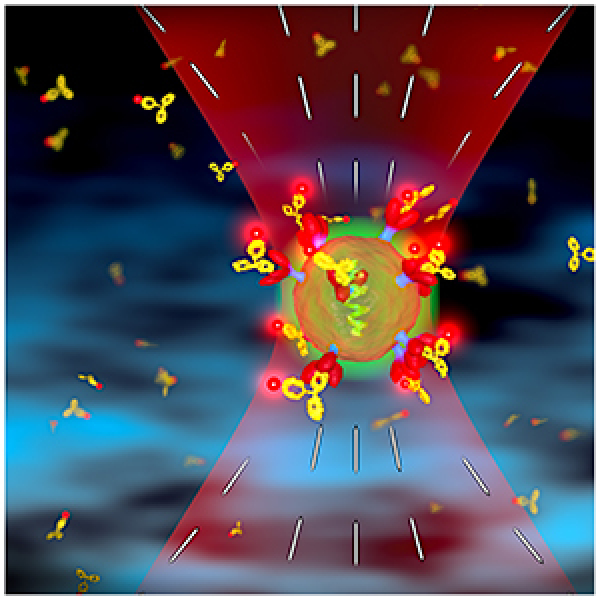Cheng Laboratory Featured on Cover of Wiley Interdisciplinary Reviews: Nanomedicine and Nanobiotechnology

Label-free detection and manipulation of single biological nanoparticles was selected as the cover artwork in the current issue of Wiley Interdisciplinary Reviews: Nanomedicine and Nanobiotechnology. A large section of the article is dedicated to discussing Dr. Wei Cheng’s laboratory’s recent work using optical trapping virometry to study the heterogeneity of HIV-1 virions in culture media. The cover artwork is a snapshot of a visualization of their experiments (Image credit: David Brennan).

The article addresses the various techniques employed in biophysics and pharmaceutics fields to detect and characterize synthetic nanoparticles being designed as potential drug delivery systems as well as naturally occurring or biological nanoparticles, including viruses and extracellular vesicles. They discuss the challenges associated with label-free detection techniques and their associated measurement sensitivities in addition to their potential contributions for future real-world applications. From the lab’s own studies involving single virus detection, they are proponents for the rational design of microfluidic or nanofluidic devices to achieve accurate sensing and multi-parametric analysis. Presently, they continue to advance optical trapping virometry to enable higher sensitivity and throughput of various biological nanoparticles including viruses.



